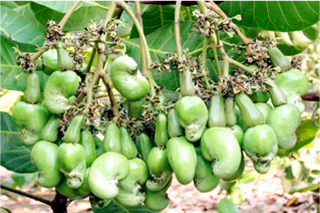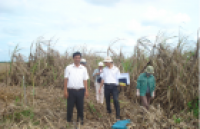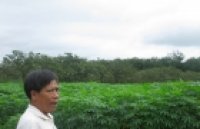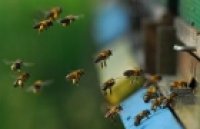| Evaluation and Genetic Analysis of Parthenocarpic Germplasms in Cucumber |
|
Parthenocarpy is an important agronomic trait in cucumber (Cucumis sativus L.) production. However, the systematic identification of parthenocarpic germplasms from national gene banks for cucumber improvement remains an international challenge. In this study, 201 cucumber lines were investigated, including different ecotypes. The percentages of parthenocarpic fruit set (PFS) and parthenocarpic fruit expansion (PFE) were evaluated in three experiments. |
|
Chenxing Gou, Pinyu Zhu, Yongjiao Meng, Fan Yang, Yan Xu, Pengfei Xia, Jinfeng Chen, Ji Li Genes (Basel); 2022 Jan 25;13(2):225. doi: 10.3390/genes13020225. AbstractParthenocarpy is an important agronomic trait in cucumber (Cucumis sativus L.) production. However, the systematic identification of parthenocarpic germplasms from national gene banks for cucumber improvement remains an international challenge. In this study, 201 cucumber lines were investigated, including different ecotypes. The percentages of parthenocarpic fruit set (PFS) and parthenocarpic fruit expansion (PFE) were evaluated in three experiments. In natural populations, the PFS rates fit a normal distribution, while PFE rates showed a skewed distribution, suggesting that both PFS and PFE rates are typical quantitative traits. Genetic analysis showed that parthenocarpy in different ecotypes was inherited in a similar incompletely dominant manner. A total of 5324 single nucleotide polymorphisms (SNPs) associated with parthenocarpy were detected in a Genome-wide association study (GWAS) of parthenocarpy in the 31 cucumber lines, from which six parthenocarpic loci, including two novel loci (Pfs1.1 and Pfs4.1), were identified. Consequently, fifteen of the elite lines that were screened presented relatively stronger parthenocarpy ability (PFS > 90%, PFE > 50%), among which six cucumber lines (18007s, 18008s, 18022s, 18076s, 18099s, and 18127s) exhibited weak first-fruit inhibition. Three lines (18011s, 18018s, and 18019s) were screened for super ovary parthenocarpy, which showed more attractive performance. Four low-temperature-enhanced parthenocarpy lines (18018s, 18022s, 18029s, and 18012s) were identified, which were suited for breeding for counter-season production. Our approaches could help increase efficiency and lead to parthenocarpy improvements for modern cucumber cultivars.
See: https://pubmed.ncbi.nlm.nih.gov/35205270/
Figure 5: Manhattan plot for parthenocarpy based on 31 re-sequence dates of cucumber lines. The plot shows individual SNPs across all chromosomes (x-axis) and −log 10 (p) values of each SNP association (y-axis). Six putative loci (Pfs1.1: Chr1,3326820–3695442, 368.6 kb, consisting of 308 SNPs; Pfs3.1: Chr3, 15857769-16956515, 1098.7 kb, consisting of 12 SNPs; Pfs3.2: Chr3, 29681685–30523468, 841.8 kb, consisting of 428 SNPs; Pfs4.1: Chr4, 15377879–15897460,519.6 kb, consisting of 346 SNPs; Pfs6.1: Chr6, 23211119–24135690,925.7 kb, consisting of 339 SNPs; Pfs6.2: Chr6, 26053985–26455152,401.2 kb, consisting of 396 SNPs) are marked by black arrow heads above the blue line. Parth3.1 and Parth3.2 on chromosome 3 (marked by blue lines) and parth6.2 on chromosome 6 (marked by red lines) were previously identified by Wu et al. and Clavin et al. [23,39]. |
|
|
|
[ Tin tức liên quan ]___________________________________________________
|


 Curently online :
Curently online :
 Total visitors :
Total visitors :
(137).png)


